If you’re new to the world of pellet grills, you’re in for a treat! Pellet grills make it easy to create smoky, flavorful dishes without all the guesswork. Whether you’re craving juicy ribs, tender chicken, or perfectly roasted vegetables, mastering a pellet grill is simpler than you might think. In this beginner’s guide, we’ll walk you through easy, foolproof pellet grill recipes that anyone — yes, even first-timers — can master. Get ready to impress your family and friends with mouthwatering meals fresh off the grill!
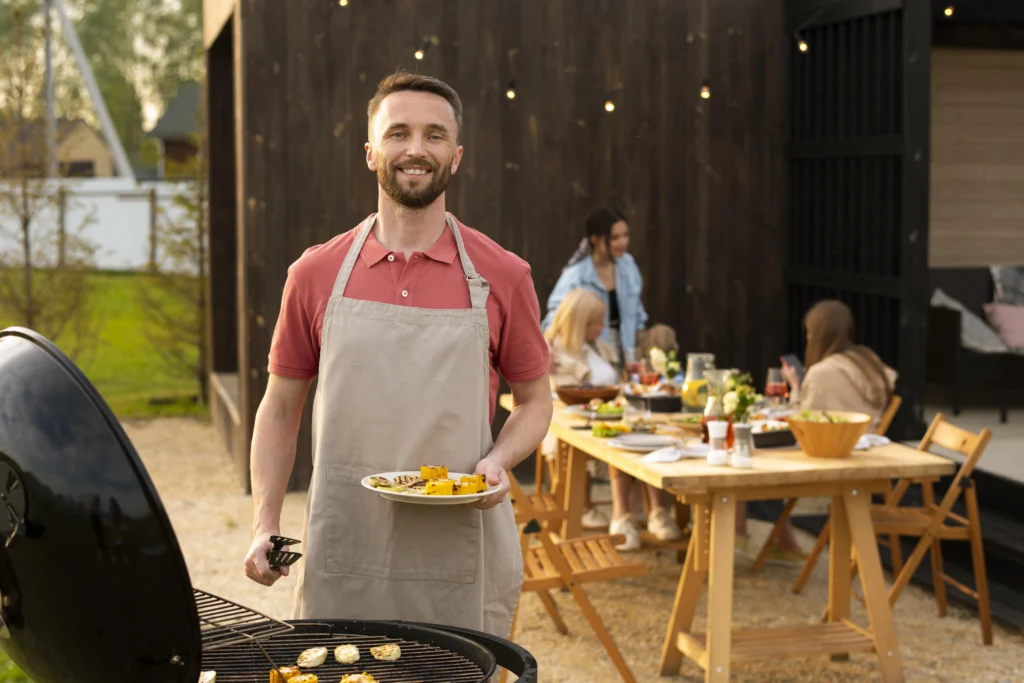
Why Pellet Grills Are Perfect for Beginners
Pellet grills are quickly becoming one of the most popular cooking devices for both new and seasoned grill enthusiasts. Their user-friendly design and versatility make them ideal for beginners who may feel overwhelmed by the complexities of traditional grilling or smoking methods. Here are a few reasons why pellet grills stand out as the perfect choice for beginners:
- Easy Temperature Control
One of the biggest challenges beginners face when grilling is maintaining a consistent cooking temperature. With traditional grills, adjusting heat can be a trial-and-error process that requires constant attention. Pellet grills, however, come equipped with an automatic temperature control system. All you have to do is set the desired temperature, and the grill will maintain it for you. This means less guesswork, more consistent results, and a stress-free cooking experience, especially for beginners who may not yet have a fine-tuned understanding of grilling temperatures. - Set-and-Forget Convenience
Pellet grills are often referred to as “set-and-forget” cookers. This is because they are designed to allow for hands-off cooking. Once you’ve prepared your food and set the grill’s temperature, you can walk away and focus on other tasks without worrying about constantly checking or flipping your food. The automatic pellet feed system ensures that the grill maintains the correct temperature for hours, making it great for beginners who may not be familiar with the nuances of monitoring fire or adjusting charcoal. - Versatility in Cooking Styles
Unlike traditional grills that are typically limited to direct heat cooking, pellet grills offer both grilling and smoking capabilities. This gives beginners the freedom to experiment with a variety of cooking styles, from quick grilling to low-and-slow smoking. With a pellet grill, you can cook anything from juicy burgers and steaks to tender brisket and smoked vegetables. This versatility allows beginners to start with simple recipes and gradually expand their skills as they gain confidence and experience with different cooking techniques. - Consistent and Flavorful Results
One of the standout features of a pellet grill is the smoky flavor it imparts to your food. The wood pellets used in the grill act as both the fuel and the flavoring agent, ensuring your food is infused with a subtle, smoky taste. The consistent temperature regulation also means your food will cook evenly, which is particularly helpful for beginners who might struggle with uneven cooking on other types of grills. Whether you’re grilling meats or vegetables, the flavor results will impress both you and your guests without requiring advanced grilling techniques. - Ease of Cleanup
When you’re new to grilling, cleaning up can seem like a daunting task, especially with grills that require ash removal or grease management. Pellet grills are designed to make cleanup as easy as possible. Many models come with features like grease management systems and ash collection trays, which minimize mess and reduce the time you spend cleaning up after cooking. This is a huge advantage for beginners who want to focus on cooking rather than worrying about a long post-cook cleanup. - Wide Range of Recipe Options
Pellet grills provide beginners with access to a wide variety of recipes that can be mastered with minimal effort. Since the grill provides consistent heat and flavor, beginners can experiment with different types of foods, from simple grilled chicken to more complex dishes like smoked ribs or even pizza. Many pellet grill manufacturers offer recipe books or online resources that are specifically designed for beginners, helping you find tried-and-tested recipes to get started with confidence. - Built-in Safety Features
Many pellet grills come equipped with safety features that make them suitable for beginners, including automatic shut-off systems that prevent overheating or unsafe cooking conditions. This offers peace of mind for new grillers who might be unfamiliar with the potential hazards of grilling. These safety features reduce the risk of accidents and allow beginners to focus on the cooking process without constantly worrying about safety.
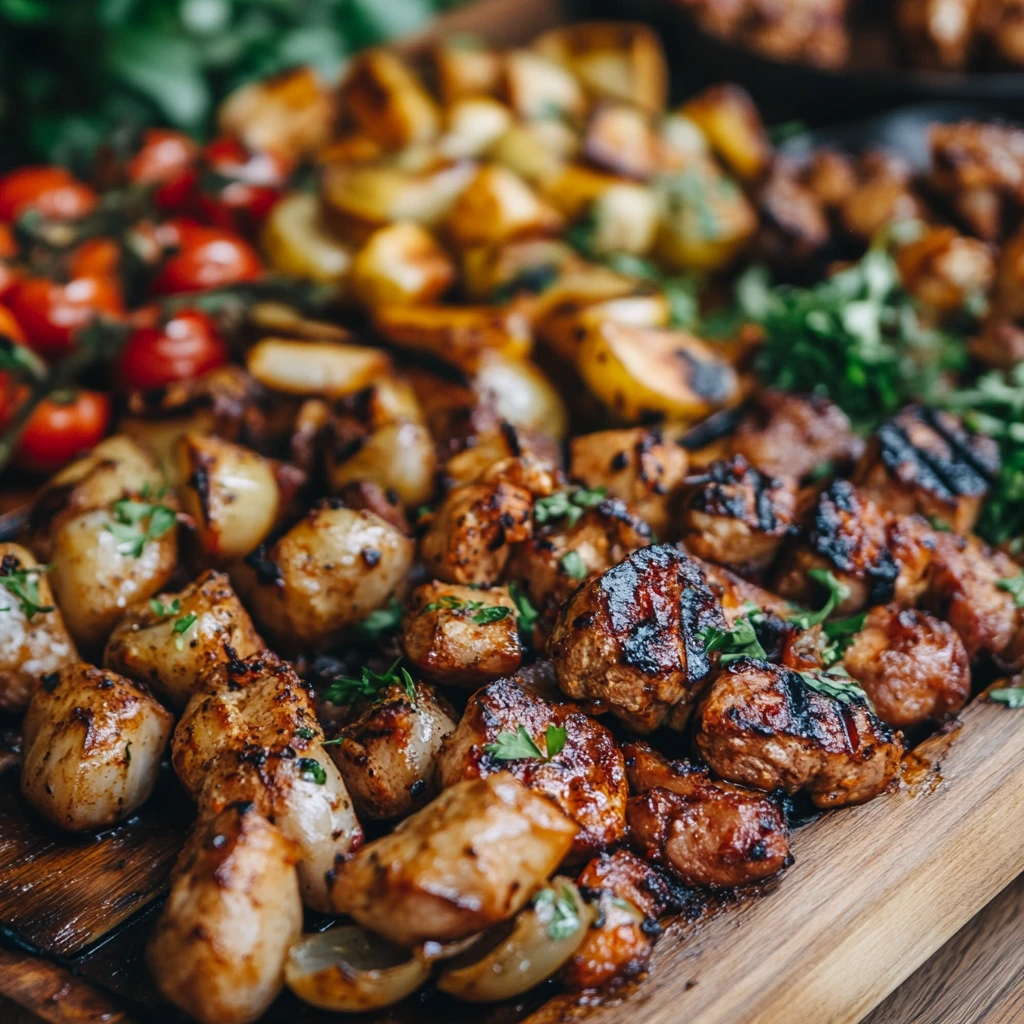
Essential Tips for Pellet Grill Success
Pellet grilling is a fantastic cooking method that can elevate your meals with minimal effort, but to truly get the most out of your pellet grill, there are a few key tips to keep in mind. These tips will help ensure that you not only master the basics but also unlock the full potential of your grill, whether you’re a beginner or advancing your skills.
- Always Preheat Your Pellet Grill
Just like with any other cooking appliance, preheating your pellet grill is crucial for optimal cooking results. Preheating allows the grill to reach the desired temperature before placing your food inside, ensuring that your meals cook evenly and consistently. Set your grill to the temperature you plan to cook at, and give it about 10-15 minutes to come up to temperature. Skipping this step can result in uneven cooking or undercooked food. - Use the Right Pellets for the Flavor You Want
The type of pellets you use can greatly affect the flavor of your food. Pellet grills use wood pellets to create both heat and smoke, which infuses your food with rich, smoky flavors. Different wood types provide distinct flavors, so it’s important to match the right pellet with the type of food you’re cooking. For example:- Hickory: Great for beef, pork, and ribs for a robust smoky flavor.
- Apple: Perfect for poultry, pork, or seafood with a mild, fruity smoke.
- Mesquite: Strong and bold, ideal for steaks and other meats that stand up to intense flavors.
- Cherry: Mild and sweet, great for pork, chicken, and even vegetables.
- Monitor Cooking Temperature Carefully
One of the benefits of pellet grills is their precise temperature control, but it’s still important to monitor the temperature throughout the cooking process. Many beginner grillers make the mistake of assuming the grill will keep the exact temperature consistently throughout the cook. While pellet grills are great at regulating heat, fluctuations can occur, especially with wind or weather conditions. Use a meat thermometer to ensure your food reaches the desired internal temperature and cook times are accurate. - Keep the Grill Clean
Regular cleaning is essential to keeping your pellet grill functioning properly and maintaining the best flavor. After each use, remove leftover pellets from the hopper, clean out the grease tray, and scrape down any residue from the grates. The buildup of grease or food particles can affect the grill’s performance and result in off-flavors in your food. Additionally, a clean grill ensures better airflow, which can help maintain consistent temperatures. - Don’t Overfill the Pellet Hopper
It can be tempting to fill the pellet hopper to the top before starting a long cook, but it’s better to avoid overfilling. Too many pellets in the hopper can cause the pellets to compress, which can interfere with the flow of pellets into the auger and create jamming issues. Always ensure you have a good supply of pellets without overloading the hopper, and monitor your pellet level during the cook so you can add more if necessary. - Utilize the “Set-and-Forget” Feature
Pellet grills are designed to be as hands-off as possible, thanks to their “set-and-forget” nature. However, beginners often feel the urge to check on the food constantly. Resist the urge to open the lid too often, as this can disrupt the cooking process by letting heat escape. Instead, rely on the built-in temperature control and set your timer to avoid checking too frequently. - Experiment with Different Cooking Methods
One of the best features of a pellet grill is its versatility. You can grill, smoke, bake, and even roast with the same device. As a beginner, start with the basic grilling and smoking methods. Once you feel comfortable, explore roasting a chicken or baking pizza on your pellet grill. With the right temperature control and technique, the possibilities are endless! - Avoid Over-Smoking Your Food
When using a pellet grill, it’s easy to assume that the more smoke, the better. However, too much smoke can overwhelm the flavor of your food and create bitterness. Start with a small amount of smoke and gradually increase it based on the flavor you prefer. If you’re cooking a delicate protein like fish or vegetables, use a lighter wood for a milder smoke flavor to avoid overpowering the dish. - Use a Drip Pan for Moisture
Pellet grills are excellent at locking in moisture, but for particularly lean cuts of meat (like chicken breast or pork tenderloin), you can place a drip pan beneath your food to help maintain moisture. The pan will catch any drippings and steam, which can then be used as a base for sauces or gravy. - Practice Patience with Low-and-Slow Cooking
One of the biggest advantages of pellet grilling is the ability to cook low and slow for a melt-in-your-mouth result, such as with brisket, ribs, or pulled pork. However, these slow-cooked recipes require patience, so don’t rush the process. Keep the lid closed, trust the grill, and let it do the work. The longer cooking time allows the wood smoke to thoroughly penetrate your food, making it rich and flavorful.
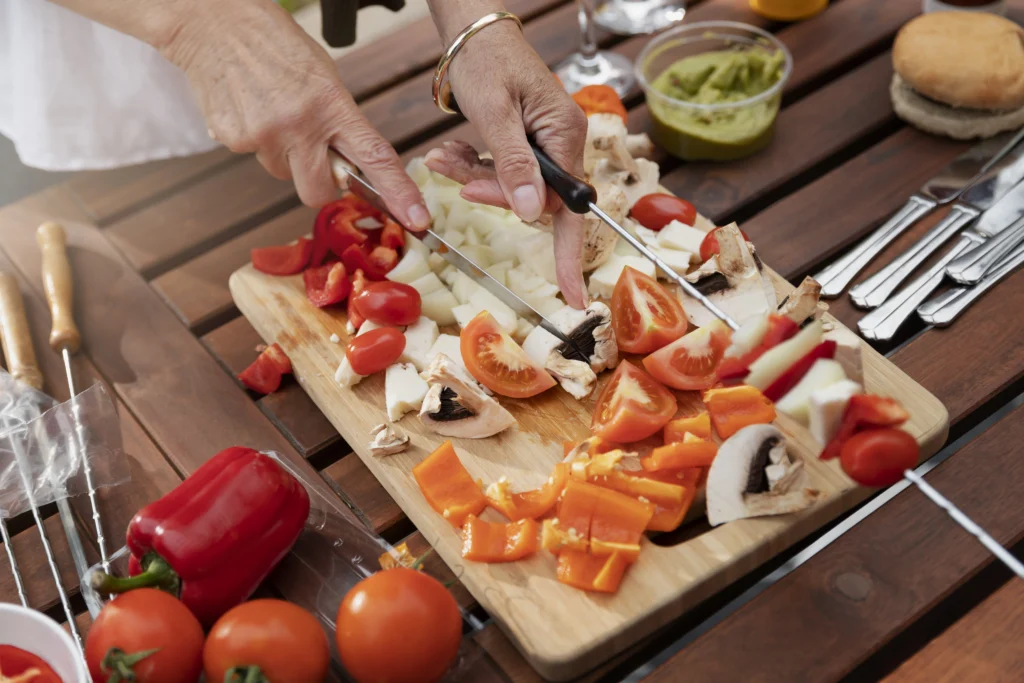
Easy Pellet Grill Recipes for First-Timers
For beginners, the best way to learn how to use a pellet grill is to start with easy, foolproof recipes that will give you confidence while still providing mouthwatering results. Here are a few simple pellet grill recipes that are perfect for first-timers:
1. Simple Grilled Chicken Breasts
Grilled chicken breasts are a classic and straightforward option that is perfect for pellet grill beginners. This recipe requires minimal ingredients but delivers juicy and flavorful chicken every time.
Ingredients:
- 2 boneless, skinless chicken breasts
- 2 tbsp olive oil
- Salt and pepper, to taste
- Your choice of wood pellets (apple, hickory, or mesquite work well)
Instructions:
- Preheat your pellet grill to 375°F.
- Brush the chicken breasts with olive oil and season generously with salt and pepper.
- Place the chicken breasts on the grill and close the lid.
- Cook for 20-30 minutes, flipping halfway through. The internal temperature should reach 165°F when done.
- Let the chicken rest for a few minutes before serving.
Why It’s Great for Beginners:
Chicken breasts cook quickly on a pellet grill, and the seasoning is simple, making it an excellent recipe to master. The automatic temperature control of the pellet grill ensures your chicken will be evenly cooked every time.
2. Smoked Ribs
Smoked ribs are a great way to showcase the smoking capabilities of your pellet grill. This recipe is perfect for beginners because it doesn’t require hours of babysitting and still produces tender, fall-off-the-bone ribs.
Ingredients:
- 1 rack of baby back ribs
- 1/4 cup dry rub (store-bought or homemade)
- 1/4 cup apple cider vinegar
- 1/4 cup BBQ sauce (optional)
Instructions:
- Preheat your pellet grill to 225°F.
- Remove the membrane from the back of the ribs and rub them with your dry rub, ensuring they are fully coated.
- Place the ribs on the grill and close the lid.
- Smoke the ribs for about 3 hours. During the last 30 minutes, you can brush on your favorite BBQ sauce if desired.
- Let the ribs rest for 10-15 minutes before slicing and serving.
Why It’s Great for Beginners:
Smoking ribs is simple on a pellet grill since you don’t need to monitor the temperature constantly. The pellet grill does the work for you, and the low-and-slow cooking method guarantees flavorful, tender ribs without much effort.
3. Grilled Vegetables
If you’re looking for a healthy, easy recipe to try on your pellet grill, grilled vegetables are the way to go. They cook quickly and can be customized based on your preferences.
Ingredients:
- 1 zucchini, sliced
- 1 bell pepper, chopped
- 1 red onion, sliced
- 2 tbsp olive oil
- Salt, pepper, and garlic powder to taste
- Wood pellets of your choice (fruit woods like apple work well)
Instructions:
- Preheat your pellet grill to 350°F.
- Toss the vegetables in olive oil and season with salt, pepper, and garlic powder.
- Arrange the vegetables on the grill grate and cook for 10-15 minutes, flipping halfway through. The vegetables should be tender and lightly charred.
- Serve as a side dish to your main course.
Why It’s Great for Beginners:
Vegetables are quick to prepare and cook, and they don’t require as much attention as meats. The wood pellets add a wonderful smokiness, and the grill’s precise temperature control ensures even cooking.
4. Pellet Grill Burgers
A classic hamburger is another easy and satisfying recipe for first-time pellet grill users. These burgers are juicy, flavorful, and easy to make with a pellet grill’s even heat distribution.
Ingredients:
- 1 lb ground beef (80/20 for best flavor)
- Salt and pepper to taste
- 4 hamburger buns
- Your favorite toppings (lettuce, tomato, cheese, etc.)
- Wood pellets (hickory or mesquite adds a nice flavor)
Instructions:
- Preheat your pellet grill to 400°F.
- Shape the ground beef into 4 equal patties and season with salt and pepper.
- Place the patties on the grill and cook for 4-6 minutes per side, or until the internal temperature reaches 160°F for well-done burgers.
- Toast the buns on the grill for about 1 minute, just until golden brown.
- Assemble your burgers with your favorite toppings and serve.
Why It’s Great for Beginners:
Burgers are a quick and easy meal that almost everyone loves. The pellet grill will ensure a consistent cook on each patty, and the smoky flavor adds a fun twist to a familiar recipe.
5. Smoked Salmon
For beginners who want to experiment with fish, smoked salmon on a pellet grill is an easy and impressive option. The grill’s consistent heat will give you perfectly smoked fish with minimal effort.
Ingredients:
- 2 salmon fillets
- 2 tbsp olive oil
- 1 tbsp lemon juice
- Salt and pepper to taste
- Wood pellets (try alder or apple for a light, sweet flavor)
Instructions:
- Preheat your pellet grill to 225°F.
- Rub the salmon fillets with olive oil, lemon juice, salt, and pepper.
- Place the salmon on the grill skin-side down and close the lid.
- Smoke for 1-2 hours until the salmon reaches an internal temperature of 145°F.
- Serve with a squeeze of fresh lemon juice.
Why It’s Great for Beginners:
Salmon is easy to prepare, cooks relatively quickly, and is hard to overcook on a pellet grill due to its steady temperature. The result is flavorful, perfectly cooked fish that looks and tastes gourmet.
Conclusion:
These beginner-friendly recipes are the perfect starting point for anyone new to pellet grilling. Whether you’re grilling burgers, smoking ribs, or trying your hand at fish or vegetables, these dishes will help you get familiar with your pellet grill and build your confidence in the kitchen. Once you’ve mastered these easy recipes, you’ll be ready to explore more advanced grilling techniques!
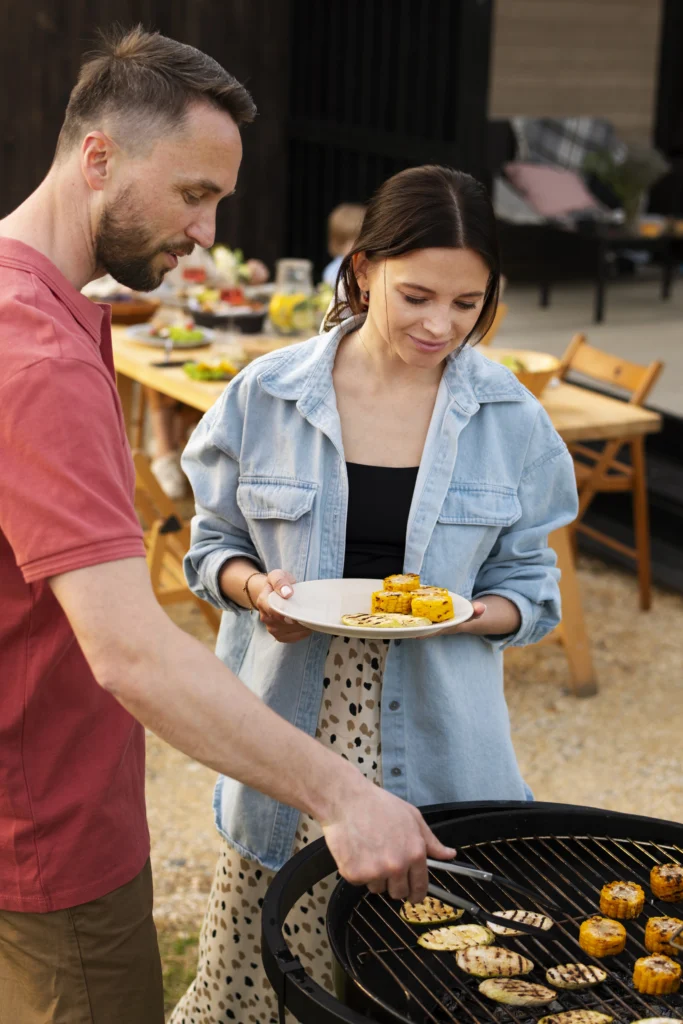
Must-Have Tools and Accessories for Pellet Grilling
While pellet grills are incredibly user-friendly, having the right tools and accessories can elevate your grilling experience, making it even easier and more enjoyable. Whether you’re just starting or looking to enhance your grilling setup, these essential tools will help ensure successful cooking every time.
1. Meat Thermometer
A high-quality meat thermometer is a must-have for anyone using a pellet grill, especially for beginners. While pellet grills are great at maintaining a steady temperature, it’s important to monitor the internal temperature of your food to ensure it’s cooked to perfection.
Why You Need It:
- Ensures food is cooked to the proper temperature, preventing undercooking or overcooking.
- Helps with precision when grilling meats like steak, chicken, or pork, where temperature control is key to flavor and texture.
Recommended Type:
- Instant-read thermometer: Quick and accurate readings.
- Probe thermometer: Stay connected to the grill while cooking, especially helpful for longer cooks like brisket or ribs.
2. Pellet Storage Bin
Pellet grills use wood pellets to generate heat and smoke, and how you store your pellets matters. Humidity can affect the quality and performance of your pellets, so investing in a good pellet storage bin is essential for keeping them dry and ready to use.
Why You Need It:
- Protects pellets from moisture, which can cause clogging and poor combustion.
- Keeps your grilling space neat and organized.
Recommended Type:
- Airtight storage containers: These keep moisture out and maintain the quality of your pellets.
- Heavy-duty plastic bins or metal containers: These are durable, moisture-resistant, and easy to stack.
3. Grill Grates and Grill Mats
For beginners, using the right grilling surface can make a big difference in the ease of cooking and cleanup. Grill grates help you get those perfect grill marks, while grill mats protect delicate foods from falling through the grates.
Why You Need It:
- Grill grates help create beautiful grill marks and promote even cooking.
- Grill mats are non-stick and are great for grilling smaller items like vegetables or fish that might fall apart or slip through the grates.
Recommended Type:
- Cast-iron grill grates: They provide excellent heat retention and grill marks.
- Non-stick grill mats: Perfect for preventing sticking and making cleanup easier.
4. Pellet Hopper Extension
While most pellet grills come with a built-in hopper, a hopper extension can be useful for longer cooks, especially if you’re smoking large cuts of meat for many hours. These extensions allow you to load more pellets into the hopper, so you don’t have to worry about running out mid-cook.
Why You Need It:
- Ideal for long smoking sessions, so you can load more pellets and cook without constant refueling.
- Allows you to experiment with different pellet flavors without having to switch them out too often.
5. Grease Management System
A grease management system helps catch any grease and drippings that come off the food while it’s cooking. This is especially helpful when grilling fatty meats or foods that can create a lot of grease.
Why You Need It:
- Prevents grease buildup on your grill, which can cause flare-ups, odors, or even fires.
- Makes cleanup easier by collecting grease in a container, preventing it from clogging up your grill’s internals.
Recommended Type:
- Drip trays: These are usually built into the grill, but extra trays or disposable drip pans can help manage grease better.
- Grease bucket: A larger container attached to your grill to catch all the drippings.
6. Grill Brush or Scraper
After each cook, cleaning your grill grates is essential to maintain the flavor of your food and ensure your pellet grill stays in top condition. A grill brush or scraper makes this task quick and easy.
Why You Need It:
- Prevents residue buildup on the grates, which can affect the flavor of your food and create a mess for your next cook.
- Keeps your pellet grill in good condition and extends its lifespan.
Recommended Type:
- Stainless steel grill brush: Effective for scraping off food and grease.
- Grill scraper: For deep cleaning of cast iron grates or for removing stuck-on debris.
7. Pellet Scoop
A pellet scoop might seem like a small accessory, but it’s incredibly helpful when it comes to adding pellets to the hopper. Instead of struggling with a bag of pellets and spilling them everywhere, a scoop allows for a more controlled and mess-free experience.
Why You Need It:
- Helps you easily transfer pellets into the hopper without spilling.
- Makes it easier to measure the amount of pellets you need for different cook times.
8. Pizza Stone
If you’re looking to expand your pellet grilling horizons and try baking or making pizza, a pizza stone is a great accessory to have. Pellet grills are capable of baking, and a pizza stone allows you to achieve crispy crusts and even cooking.
Why You Need It:
- Ideal for baking pizzas, bread, or even cookies on your pellet grill.
- Helps distribute heat evenly for a crispy crust and prevents sogginess.
Recommended Type:
- Ceramic or cordierite pizza stone: These stones hold heat well and distribute it evenly for perfect results.
9. BBQ Gloves
Grilling involves high heat, so protective gloves are a must to handle hot grills, hot plates, or food straight off the grill. BBQ gloves provide a good grip and protect your hands from burns or discomfort during the cooking process.
Why You Need It:
- Protects your hands from burns while handling hot grill components or food.
- Provides a secure grip on grilling tools and food items.
Recommended Type:
- Heat-resistant silicone gloves: These are durable and protect your hands from high temperatures.
- Leather BBQ gloves: Offer excellent protection and dexterity, especially for handling hot grills and heavy-duty items.
10. Cover for Your Pellet Grill
A grill cover is an essential accessory to protect your pellet grill from the elements when it’s not in use. Exposure to rain, snow, or sun can damage the grill’s exterior and internal components over time.
Why You Need It:
- Protects your grill from dust, rain, and debris when not in use.
- Extends the lifespan of your grill by preventing rust and wear from the elements.
Recommended Type:
- Custom-fit covers: These are specifically designed for the make and model of your grill and offer the best protection.
Conclusion
With these must-have tools and accessories, you’ll be well-equipped to take full advantage of your pellet grill and elevate your cooking game. Whether it’s maintaining a steady temperature, making cleanup easier, or enhancing your cooking capabilities, these accessories will make your grilling experience smoother and more enjoyable. Start with the basics, and as you gain experience, you can add more specialized tools to your setup for even more delicious and easy meals.
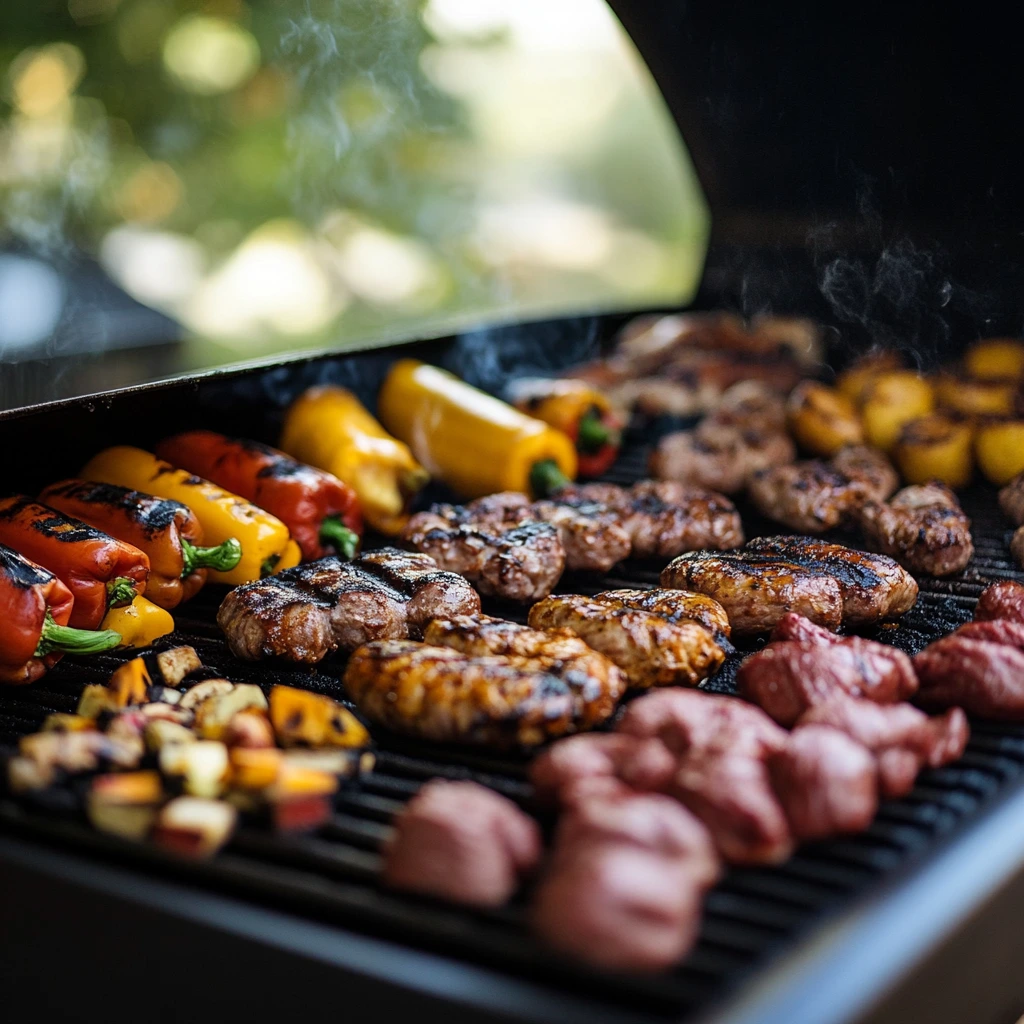
Pro Tips to Elevate Your Pellet Grill Game
Once you’ve mastered the basics of pellet grilling, it’s time to take your grilling to the next level. These pro tips will help you achieve more complex flavors, perfect results, and truly impressive dishes, turning you from a beginner to a pellet grill pro in no time.
1. Experiment with Pellet Flavor Combos
One of the most exciting aspects of pellet grilling is the ability to mix and match different wood pellet flavors to create a unique taste profile. While individual wood flavors can stand alone, combining two or more can produce complex and deep smoky flavors that are perfect for specific meats or dishes.
Pro Tip:
- For a robust smoke flavor, try combining hickory with mesquite for red meats like steak or brisket.
- For a sweeter, milder flavor, combine apple and cherry wood pellets when grilling chicken or pork.
- Experiment with custom blends to find the perfect match for different types of food.
2. Master the Reverse Sear Technique
The reverse sear technique is a popular method for grilling steaks and other thick cuts of meat. It involves cooking the meat slowly at a low temperature and then finishing it with a quick, high-temperature sear to get a crispy crust without overcooking the inside.
Pro Tip:
- Preheat your pellet grill to 225°F.
- Place your steak or thick-cut meat on the grill and cook slowly until the internal temperature is about 10-15°F below your desired doneness (use a meat thermometer for accuracy).
- Once the meat has reached the right internal temperature, increase the grill temperature to around 450°F to sear the meat for about 1-2 minutes per side until a nice crust forms.
- Let the steak rest for a few minutes before slicing to retain juices.
Why It Works:
The low-and-slow cooking ensures the meat is cooked evenly throughout, and the high-heat searing at the end gives you a flavorful, crispy exterior without drying out the inside.
3. Utilize a Pellet Smoker Tube for Extra Smoke
A pellet smoker tube is a fantastic tool for infusing extra smoke flavor into your food, especially if you want a stronger smoky taste. It’s an easy way to add more complexity without needing to adjust the type of pellets in your main hopper.
Pro Tip:
- Fill the smoker tube with your desired wood pellets.
- Light the tube and place it on the grill grate while cooking.
- It will produce a steady, consistent smoke that can enhance the flavor of delicate proteins like fish, vegetables, or even cheeses.
- Experiment with different woods to find the right level of smokiness for your dishes.
4. Use the “Low and Slow” Method for Tender Cuts
One of the best features of pellet grilling is the ability to cook at low temperatures for long periods, resulting in incredibly tender and flavorful meat. This is perfect for tougher cuts like brisket, pork shoulder, or ribs, where slow cooking helps break down connective tissues, making the meat melt-in-your-mouth tender.
Pro Tip:
- For cuts like brisket or pulled pork, set the grill to 225°F and let it cook for several hours.
- Use a probe thermometer to monitor internal temperatures. For brisket, aim for 200°F internally for maximum tenderness.
- Wrap the meat in butcher paper or foil once it hits the right internal temperature to retain moisture and continue cooking until you reach your desired doneness.
5. Create a “Two-Zone” Cooking Setup
A two-zone cooking setup is ideal for foods that require both direct and indirect heat, like burgers, chicken, or vegetables. It allows you to sear the food over direct heat and then move it to a cooler area to finish cooking without overcooking or burning.
Pro Tip:
- Preheat the pellet grill and set it up with two zones: one side at a higher temperature (around 400-450°F) and the other side at a lower, indirect heat (around 250-300°F).
- Start by searing the food over the high-heat side for 1-2 minutes on each side, then move it to the cooler side to finish cooking without burning.
- This method works wonders for thicker cuts of meat like bone-in chicken or thick pork chops, ensuring the outside gets a nice sear while the inside stays juicy and tender.
6. Use a Water Pan for Moisture and Flavor
Adding a water pan to your pellet grill can help regulate the temperature, improve moisture retention, and even infuse additional flavor into your food, especially during long cooks like smoking or roasting.
Pro Tip:
- Place a water pan underneath your cooking grate, close to the heat source, to create steam during cooking.
- This is especially helpful for larger cuts like brisket, turkey, or pork shoulder, which can dry out during long smoking sessions.
- For extra flavor, you can fill the water pan with broth, apple juice, or wine, which will infuse your food with subtle flavors while maintaining moisture.
7. Plan Ahead with Pellet Grill Cooking Timers
Timing is crucial when grilling, especially for slow-cooked dishes like roasts, ribs, or smoked meats. One great pro tip is to use cooking timers to track your cooking times and ensure everything is done on schedule.
Pro Tip:
- Invest in a digital cooking timer or smart grilling device that connects to your phone. These can alert you when it’s time to check on your food or flip it, allowing you to enjoy your time with family and friends without constantly checking the grill.
- Some pellet grills also come with built-in timers and temperature probes, which can alert you when your food has reached the ideal internal temperature.
8. Let Your Meat Rest Before Cutting
It’s tempting to cut into your freshly grilled meat right away, but resting the meat before slicing allows the juices to redistribute, making your food juicier and more flavorful.
Pro Tip:
- After your meat has finished cooking, remove it from the grill and let it rest under a loose foil tent for at least 10-15 minutes.
- This is especially important for large cuts like brisket, turkey, or ribs, which require time to relax and allow the juices to redistribute evenly.
Conclusion
By incorporating these pro tips into your pellet grilling routine, you’ll take your cooking to new heights, impressing friends and family with your enhanced flavors and perfect cooking techniques. Pellet grilling isn’t just about making great meals—it’s about unlocking new possibilities, experimenting with flavors, and fine-tuning your grilling skills. With time and practice, you’ll be grilling like a pro in no time!
Table of Contents
Perfect Hotcake Mix Recipe for Sweet and Savory Pancakes – labelrecipes.com
11 Best Pellet Grill Recipes [Traeger, Pit Boss & Camp Chef BBQ Ideas]
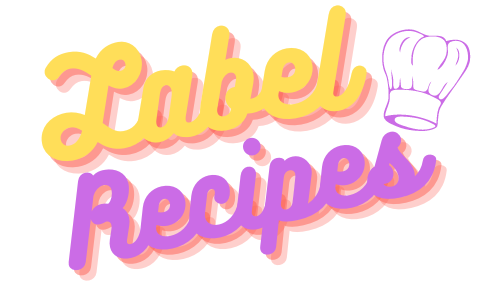
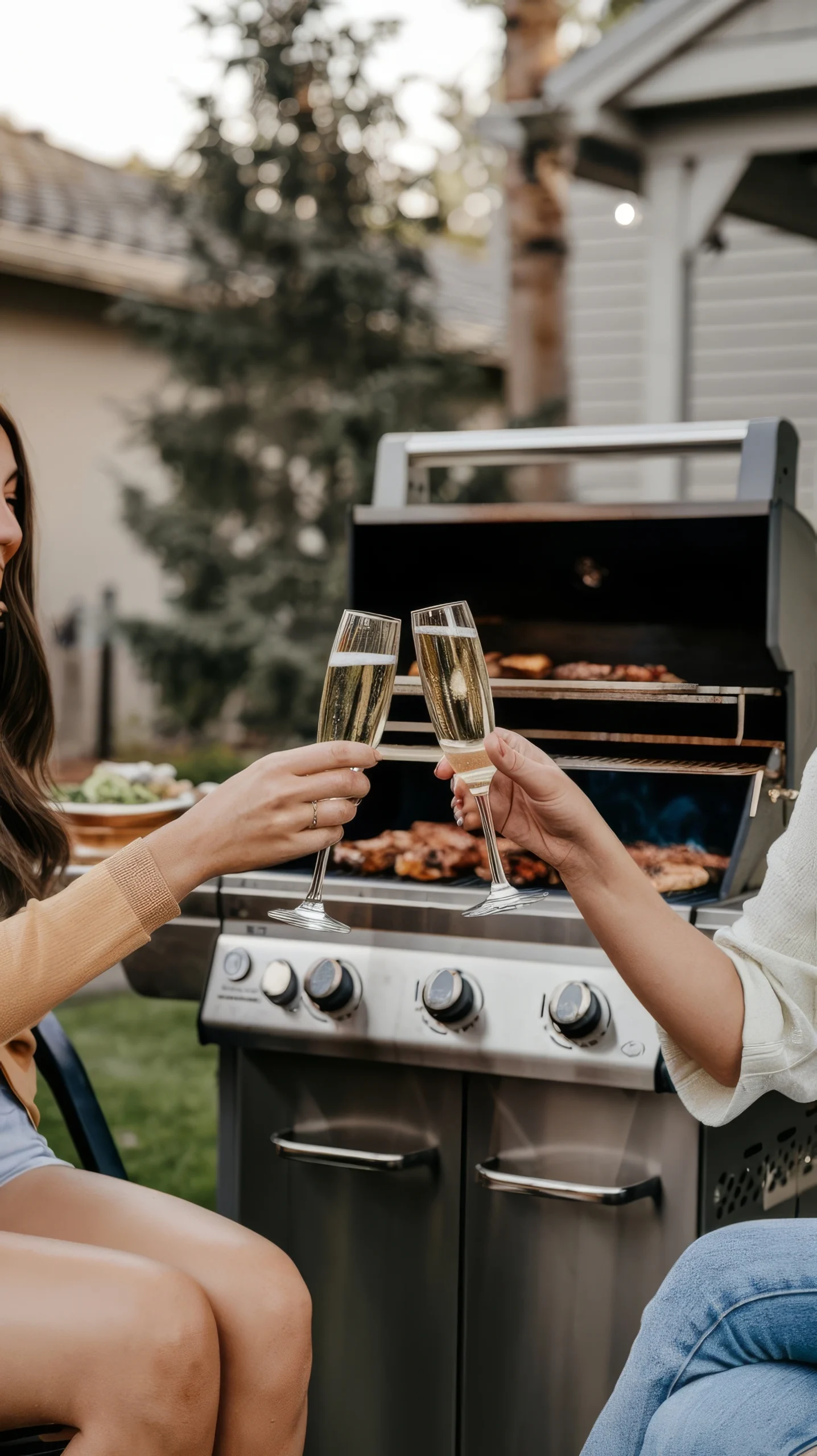
Good https://rb.gy/4gq2o4
thank you so much
Very good https://rb.gy/4gq2o4
thank you so much
Awesome https://is.gd/N1ikS2
thank you so much
Very good https://is.gd/N1ikS2
thank you so much
Awesome https://is.gd/N1ikS2
thank you so much